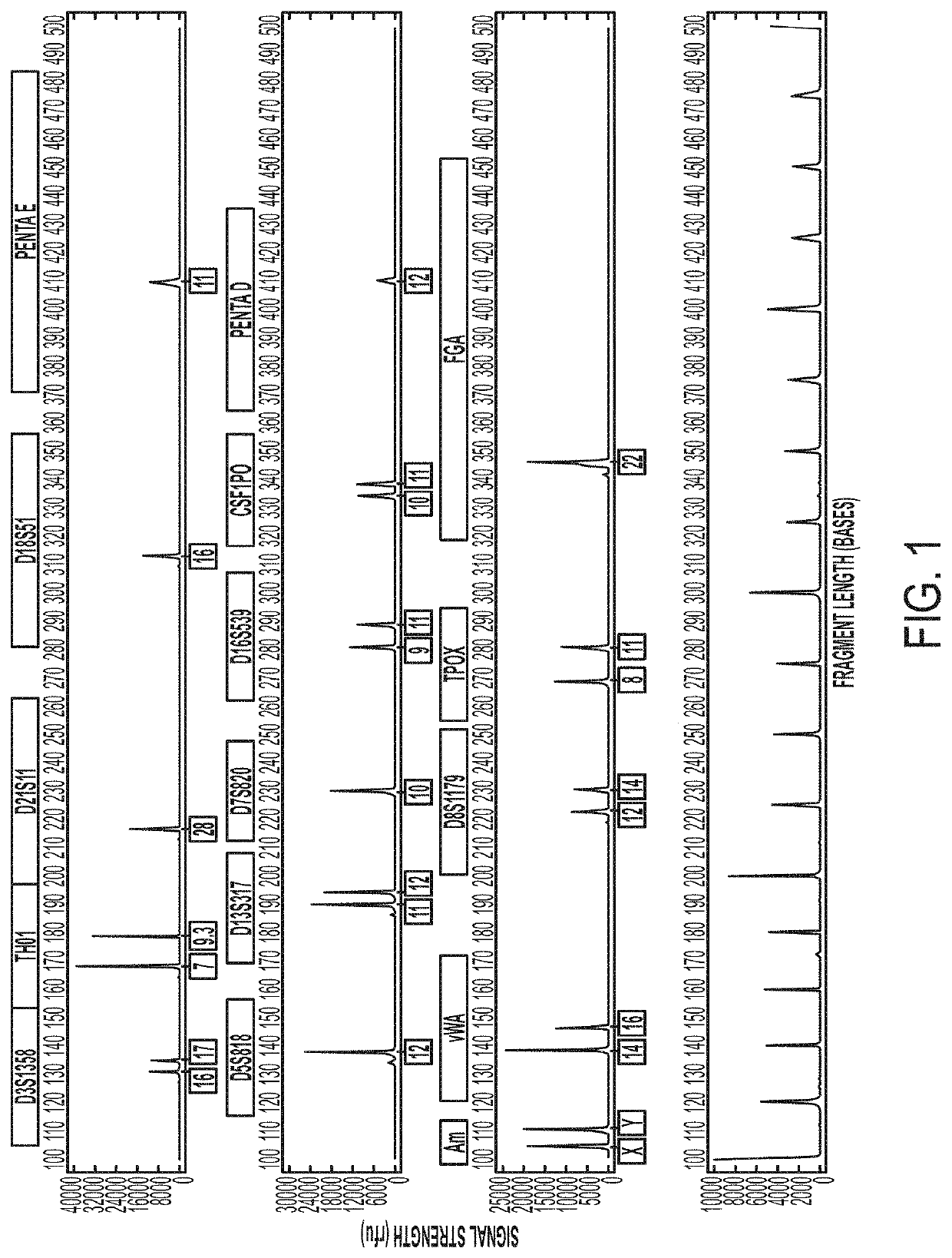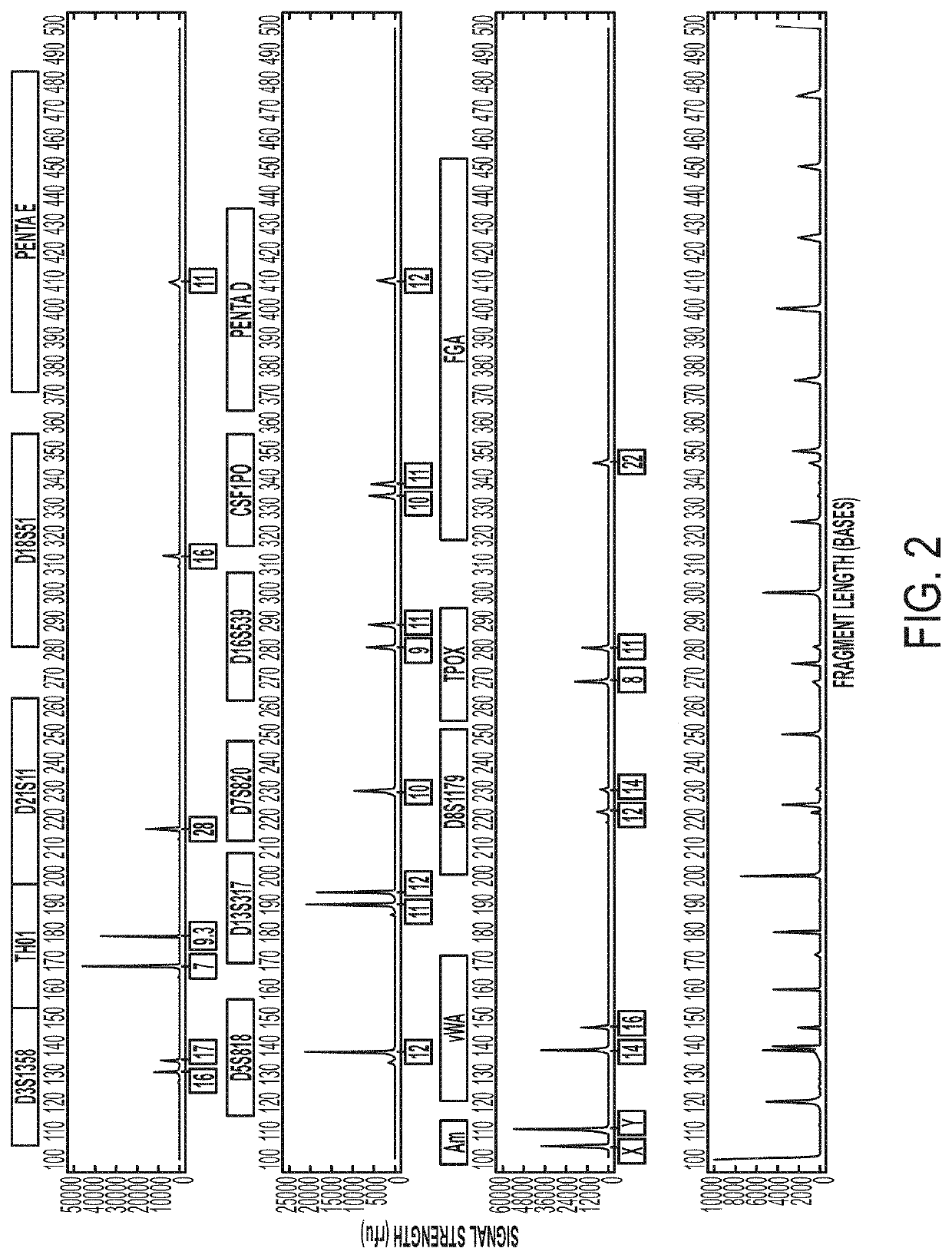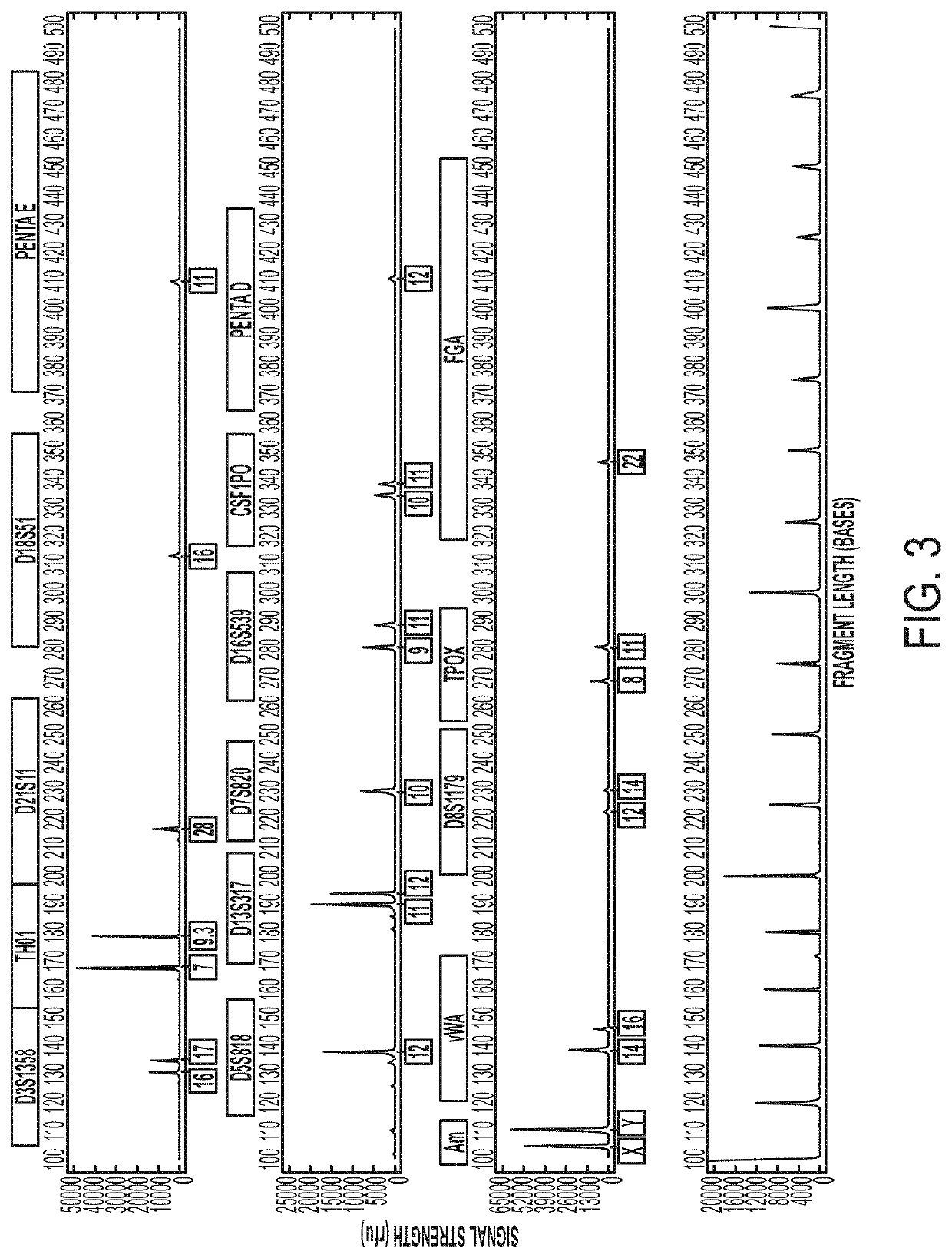Systems and Methods for Rapid Nucleic Acid Extraction, Purification and Analysis from Semen
a nucleic acid and purification technology, applied in the field of systems and processes for nucleic acid extraction, purification and analysis, can solve the problems of low dna content in the sample, no universal protocol that allows for the extraction of dna from materials, and the efficiency of dna extraction
- Summary
- Abstract
- Description
- Claims
- Application Information
AI Technical Summary
Benefits of technology
Problems solved by technology
Method used
Image
Examples
example 1
Extraction, Purification, and Analysis of Nucleic Acids from Bone
[0113]In this example, we performed a rapid nucleic acid extraction from bone samples and analyzed the extracted nucleic acid using a swab and the I-Chip in the ANDE system.
[0114]Bone samples were artificially degraded to mimic casework and / or disaster victim identification in plane crash tragedies (e.g. Indonesia AirAsia Flight 8501). Mock decomposition of bone samples (femoral and humeral fragments) was performed by soaking the fragments in Atlantic coast salt water at 84° F. (average temperature of Java Sea) for 4 days. The bone samples were then washed with water, bleached, washed again with water, and then ethanol. After drying, the bones were grinded by either freezer mill to obtain powdered samples or simply hammered to obtain fragmented or granulated samples. The grinded bone samples were placed into four separate 2 ml centrifuge tubes containing 200 mg hammered bone, 500 mg hammered bone, 200 g freeze-milled b...
example 2
Extraction and Analysis of Nucleic Acids from Tooth
[0119]In this example, we performed a rapid nucleic acid extraction from tooth samples and analyzed the extracted nucleic acid in swab and LDC BCS system. The procedure is a modification of Example 1. After a 1 minute vortex, the tooth sample was incubated for 10 mins at 56° C. to enhance demineralization. As a result, we were able to obtain STR profiles of the nucleic acids extracted from the tooth sample. See FIG. 9 showing STR profile of the nucleic acids extracted from 200 mg freeze-milled tooth powder from root.
[0120]Our results indicate that a lminute demineralization process with tooth, was insufficient to obtain consistent full or good partial profiles. This is probably due to the more compact matrix of tooth compared to bone and a longer demineralization is needed for DNA release. The root of a tooth sample has been reported to contain more DNA than the crown or other parts of the tooth. We notice that when we process crown...
example 3
Extraction and Analysis of Nucleic Acids from Casework Tooth Samples
[0122]Casework tooth samples were obtained from burnt bodies that had been buried for at least 2 years. Tooth samples were washed in running water and antibacterial soap while scraping the surface with cloth and bleach. The samples were then subjected to bleach-sterile-water-ethanol rinse, allowed to dry for 10 mins. The root was separated from the crown using a dremel. The root was then freeze-milled and 200 mg was demineralized.
PUM
 Login to View More
Login to View More Abstract
Description
Claims
Application Information
 Login to View More
Login to View More - R&D
- Intellectual Property
- Life Sciences
- Materials
- Tech Scout
- Unparalleled Data Quality
- Higher Quality Content
- 60% Fewer Hallucinations
Browse by: Latest US Patents, China's latest patents, Technical Efficacy Thesaurus, Application Domain, Technology Topic, Popular Technical Reports.
© 2025 PatSnap. All rights reserved.Legal|Privacy policy|Modern Slavery Act Transparency Statement|Sitemap|About US| Contact US: help@patsnap.com



